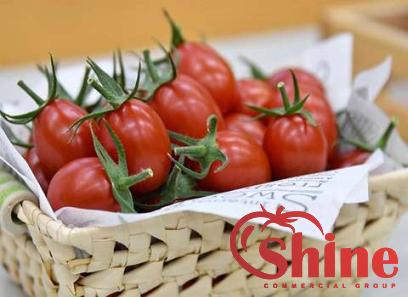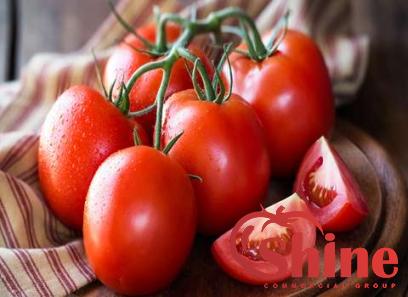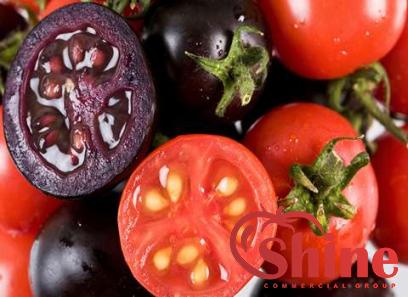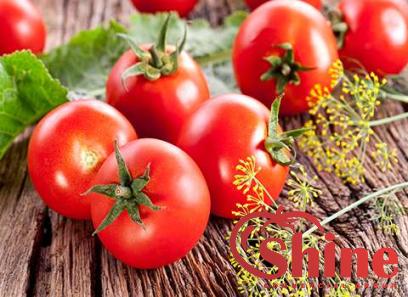Tomato paste is a versatile and flavorful ingredient that can elevate the taste of various dishes. While store-bought tomato paste is convenient, making your own DIY tomato paste at home can be a rewarding experience that allows you to control the quality of ingredients and customize the flavor to your liking. In this comprehensive guide, we will explore the benefits of making homemade tomato paste, the step-by-step process of creating it, and ways to use it in your culinary creations. By the end of this article, you’ll be inspired to embark on your tomato paste-making journey and savor the rich, concentrated flavor of this kitchen staple. Benefits of DIY Tomato Paste Making your own tomato paste offers a range of benefits that go beyond just the satisfaction of creating something from scratch. One of the primary advantages of DIY tomato paste is the ability to control the quality of the ingredients used. When you make tomato paste at home, you can select fresh, ripe tomatoes and ensure that no artificial additives or preservatives are included in the final product. Additionally, homemade tomato paste allows you to customize the flavor profile to suit your preferences. You can experiment with different varieties of tomatoes, herbs, and spices to create a unique and personalized tomato paste that complements your favorite dishes. By making your own tomato paste, you can also reduce waste by using up excess tomatoes before they spoil, making it a practical and environmentally friendly choice.

.
 The Process of Making DIY Tomato Paste Creating homemade tomato paste is a simple yet rewarding process that requires just a few key ingredients and some time and patience. To begin, gather fresh, ripe tomatoes, garlic, olive oil, salt, and any other seasonings you desire, such as basil, oregano, or red pepper flakes. Start by washing and chopping the tomatoes into quarters, removing the core and any green parts. In a large saucepan, heat olive oil over medium heat and add chopped garlic, allowing it to infuse the oil with flavor. Add the quartered tomatoes to the saucepan and season with salt and any additional herbs or spices. Allow the tomatoes to cook down slowly over low heat, stirring occasionally to prevent sticking. As the tomatoes break down and release their juices, continue to simmer the mixture until it thickens and reduces to a concentrated paste-like consistency. This process can take several hours, so be patient and maintain a low heat to prevent scorching. Once the tomato mixture has thickened to your desired consistency, remove it from the heat and let it cool slightly. Using a blender or food processor, puree the mixture until smooth and free of any lumps. If you prefer a smoother texture, you can strain the puree through a fine mesh sieve to remove any remaining seeds or skins. Storing and Using DIY Tomato Paste Once you have made your homemade tomato paste, you can store it in a clean, airtight container in the refrigerator for up to a week. For longer storage, consider freezing the tomato paste in ice cube trays and transferring the frozen cubes to a freezer-safe bag for future use. There are countless ways to use homemade tomato paste in your cooking. Add a spoonful to soups, stews, and sauces to enhance their depth of flavor, or use it as a base for homemade pizza sauce or marinades. Tomato paste can also be spread on toast or mixed into dips and spreads for a burst of rich tomato flavor. Experiment with incorporating homemade tomato paste into your favorite recipes to discover new and creative ways to enjoy this versatile ingredient.
The Process of Making DIY Tomato Paste Creating homemade tomato paste is a simple yet rewarding process that requires just a few key ingredients and some time and patience. To begin, gather fresh, ripe tomatoes, garlic, olive oil, salt, and any other seasonings you desire, such as basil, oregano, or red pepper flakes. Start by washing and chopping the tomatoes into quarters, removing the core and any green parts. In a large saucepan, heat olive oil over medium heat and add chopped garlic, allowing it to infuse the oil with flavor. Add the quartered tomatoes to the saucepan and season with salt and any additional herbs or spices. Allow the tomatoes to cook down slowly over low heat, stirring occasionally to prevent sticking. As the tomatoes break down and release their juices, continue to simmer the mixture until it thickens and reduces to a concentrated paste-like consistency. This process can take several hours, so be patient and maintain a low heat to prevent scorching. Once the tomato mixture has thickened to your desired consistency, remove it from the heat and let it cool slightly. Using a blender or food processor, puree the mixture until smooth and free of any lumps. If you prefer a smoother texture, you can strain the puree through a fine mesh sieve to remove any remaining seeds or skins. Storing and Using DIY Tomato Paste Once you have made your homemade tomato paste, you can store it in a clean, airtight container in the refrigerator for up to a week. For longer storage, consider freezing the tomato paste in ice cube trays and transferring the frozen cubes to a freezer-safe bag for future use. There are countless ways to use homemade tomato paste in your cooking. Add a spoonful to soups, stews, and sauces to enhance their depth of flavor, or use it as a base for homemade pizza sauce or marinades. Tomato paste can also be spread on toast or mixed into dips and spreads for a burst of rich tomato flavor. Experiment with incorporating homemade tomato paste into your favorite recipes to discover new and creative ways to enjoy this versatile ingredient.
..
 Whether you use it as a condiment, a flavor enhancer, or a starring ingredient, homemade tomato paste is sure to elevate your culinary creations and impress your family and friends. Conclusion In conclusion, making your own DIY tomato paste is a rewarding and practical culinary endeavor that allows you to take control of the quality and flavor of this essential ingredient. By following a few simple steps and investing some time and effort, you can create a homemade tomato paste that is flavorful, versatile, and free from artificial additives. Whether you choose to use your homemade tomato paste in classic Italian dishes like pasta sauces and pizzas or get creative with new recipes and flavor combinations, the possibilities are endless. So why not try your hand at making DIY tomato paste and enjoy the rich, concentrated flavor of this kitchen staple in your own home? With its versatility and ability to enhance a wide range of dishes, homemade tomato paste is a must-have in any home cook’s pantry. The deep, rich flavor of DIY tomato paste adds depth and complexity to soups, stews, sauces, and more. Its concentrated form means that a little goes a long way, making it a cost-effective and flavorful addition to your culinary creations. One of the key benefits of making your own tomato paste is the ability to tailor it to suit your individual taste preferences. You can experiment with different types of tomatoes, such as Roma, San Marzano, or heirloom varieties, to create a tomato paste with a unique flavor profile. Additionally, you can adjust the seasonings and herbs to suit the dishes you plan to use the tomato paste in, allowing for endless customization options. In addition to its versatility in savory dishes, DIY tomato paste can also be used in sweet recipes to add depth and complexity to desserts. For example, a touch of tomato paste can enhance the flavor of a rich chocolate cake or add a savory-sweet component to fruit jams and chutneys.
Whether you use it as a condiment, a flavor enhancer, or a starring ingredient, homemade tomato paste is sure to elevate your culinary creations and impress your family and friends. Conclusion In conclusion, making your own DIY tomato paste is a rewarding and practical culinary endeavor that allows you to take control of the quality and flavor of this essential ingredient. By following a few simple steps and investing some time and effort, you can create a homemade tomato paste that is flavorful, versatile, and free from artificial additives. Whether you choose to use your homemade tomato paste in classic Italian dishes like pasta sauces and pizzas or get creative with new recipes and flavor combinations, the possibilities are endless. So why not try your hand at making DIY tomato paste and enjoy the rich, concentrated flavor of this kitchen staple in your own home? With its versatility and ability to enhance a wide range of dishes, homemade tomato paste is a must-have in any home cook’s pantry. The deep, rich flavor of DIY tomato paste adds depth and complexity to soups, stews, sauces, and more. Its concentrated form means that a little goes a long way, making it a cost-effective and flavorful addition to your culinary creations. One of the key benefits of making your own tomato paste is the ability to tailor it to suit your individual taste preferences. You can experiment with different types of tomatoes, such as Roma, San Marzano, or heirloom varieties, to create a tomato paste with a unique flavor profile. Additionally, you can adjust the seasonings and herbs to suit the dishes you plan to use the tomato paste in, allowing for endless customization options. In addition to its versatility in savory dishes, DIY tomato paste can also be used in sweet recipes to add depth and complexity to desserts. For example, a touch of tomato paste can enhance the flavor of a rich chocolate cake or add a savory-sweet component to fruit jams and chutneys.
…
 The umami-rich flavor of tomato paste can surprise and delight your taste buds when used in unexpected ways in your baking and dessert recipes. Making your own tomato paste can also be a fun and educational experience for both novice and experienced cooks. The process of slowly cooking down the tomatoes allows you to observe the transformation of fresh ingredients into a rich, concentrated paste, deepening your understanding of cooking techniques and flavor development. By engaging in the process of making tomato paste from scratch, you can develop a greater appreciation for the ingredients and skills that go into creating delicious and satisfying dishes. Furthermore, DIY tomato paste can be a sustainable and eco-friendly choice for home cooks looking to minimize food waste and reduce their environmental impact. By using up excess or overripe tomatoes to make tomato paste, you can avoid throwing away perfectly good produce and instead transform it into a delicious and versatile ingredient that can be enjoyed in a variety of dishes. Not only does making your own tomato paste help reduce food waste, but it also allows you to have greater control over the quality and sourcing of the ingredients used, promoting a more conscious and sustainable approach to cooking. In conclusion, the process of making DIY tomato paste is a rewarding and fulfilling endeavor that offers numerous benefits in terms of flavor, versatility, and sustainability. By embarking on your tomato paste-making journey, you can take control of the quality and taste of this essential ingredient, create unique and personalized flavor profiles, and deepen your culinary knowledge and skills. Whether you are a seasoned home cook or a beginner in the kitchen, making your own tomato paste is a worthwhile and enjoyable experience that can elevate your cooking to new heights. So why not give it a try and discover the joys of creating your own homemade tomato paste from scratch? With a little time, effort, and creativity, you can enjoy the rich, complex flavors of DIY tomato paste in your favorite dishes and impress your family and friends with your culinary prowess.
The umami-rich flavor of tomato paste can surprise and delight your taste buds when used in unexpected ways in your baking and dessert recipes. Making your own tomato paste can also be a fun and educational experience for both novice and experienced cooks. The process of slowly cooking down the tomatoes allows you to observe the transformation of fresh ingredients into a rich, concentrated paste, deepening your understanding of cooking techniques and flavor development. By engaging in the process of making tomato paste from scratch, you can develop a greater appreciation for the ingredients and skills that go into creating delicious and satisfying dishes. Furthermore, DIY tomato paste can be a sustainable and eco-friendly choice for home cooks looking to minimize food waste and reduce their environmental impact. By using up excess or overripe tomatoes to make tomato paste, you can avoid throwing away perfectly good produce and instead transform it into a delicious and versatile ingredient that can be enjoyed in a variety of dishes. Not only does making your own tomato paste help reduce food waste, but it also allows you to have greater control over the quality and sourcing of the ingredients used, promoting a more conscious and sustainable approach to cooking. In conclusion, the process of making DIY tomato paste is a rewarding and fulfilling endeavor that offers numerous benefits in terms of flavor, versatility, and sustainability. By embarking on your tomato paste-making journey, you can take control of the quality and taste of this essential ingredient, create unique and personalized flavor profiles, and deepen your culinary knowledge and skills. Whether you are a seasoned home cook or a beginner in the kitchen, making your own tomato paste is a worthwhile and enjoyable experience that can elevate your cooking to new heights. So why not give it a try and discover the joys of creating your own homemade tomato paste from scratch? With a little time, effort, and creativity, you can enjoy the rich, complex flavors of DIY tomato paste in your favorite dishes and impress your family and friends with your culinary prowess.










Your comment submitted.